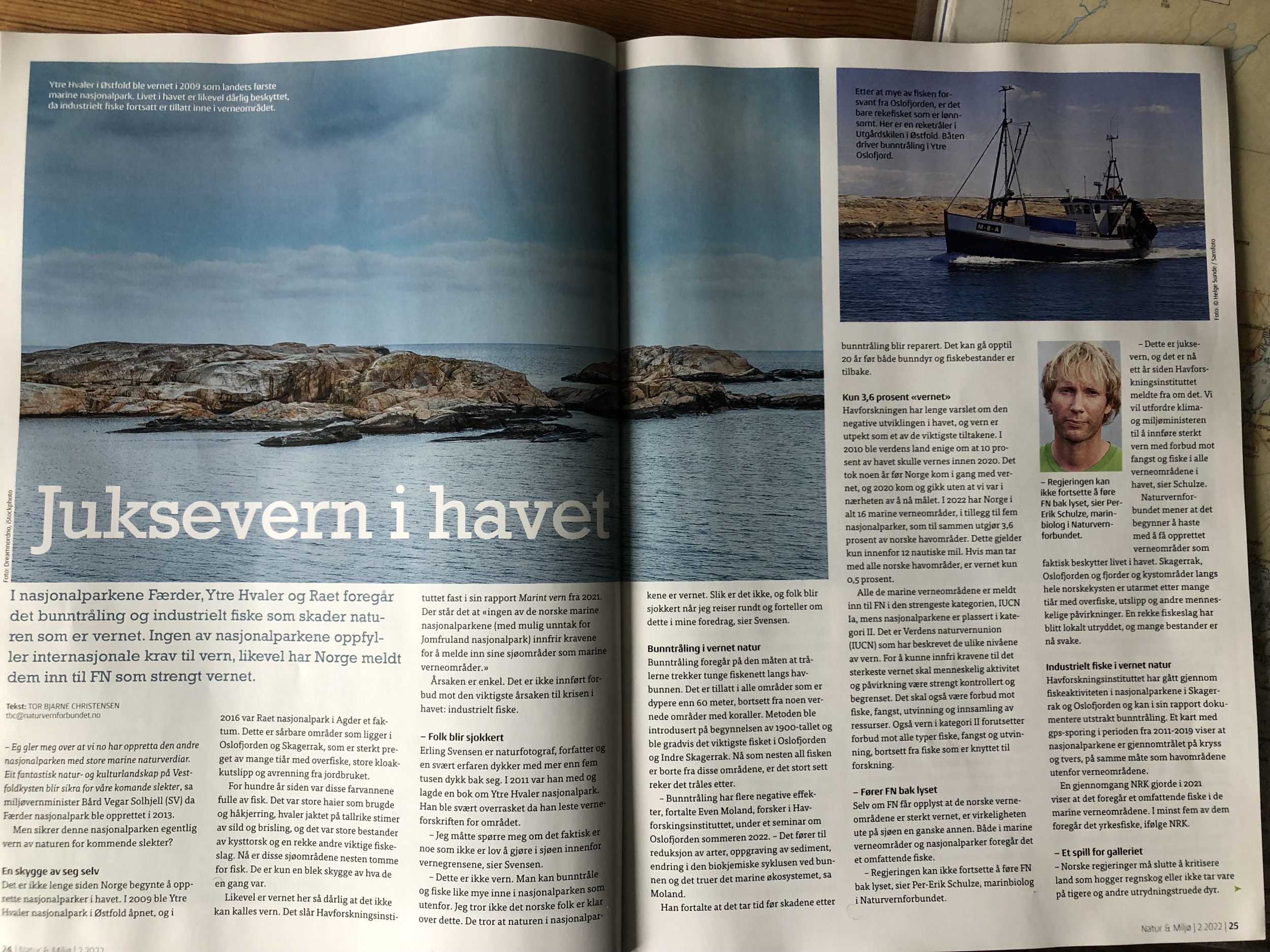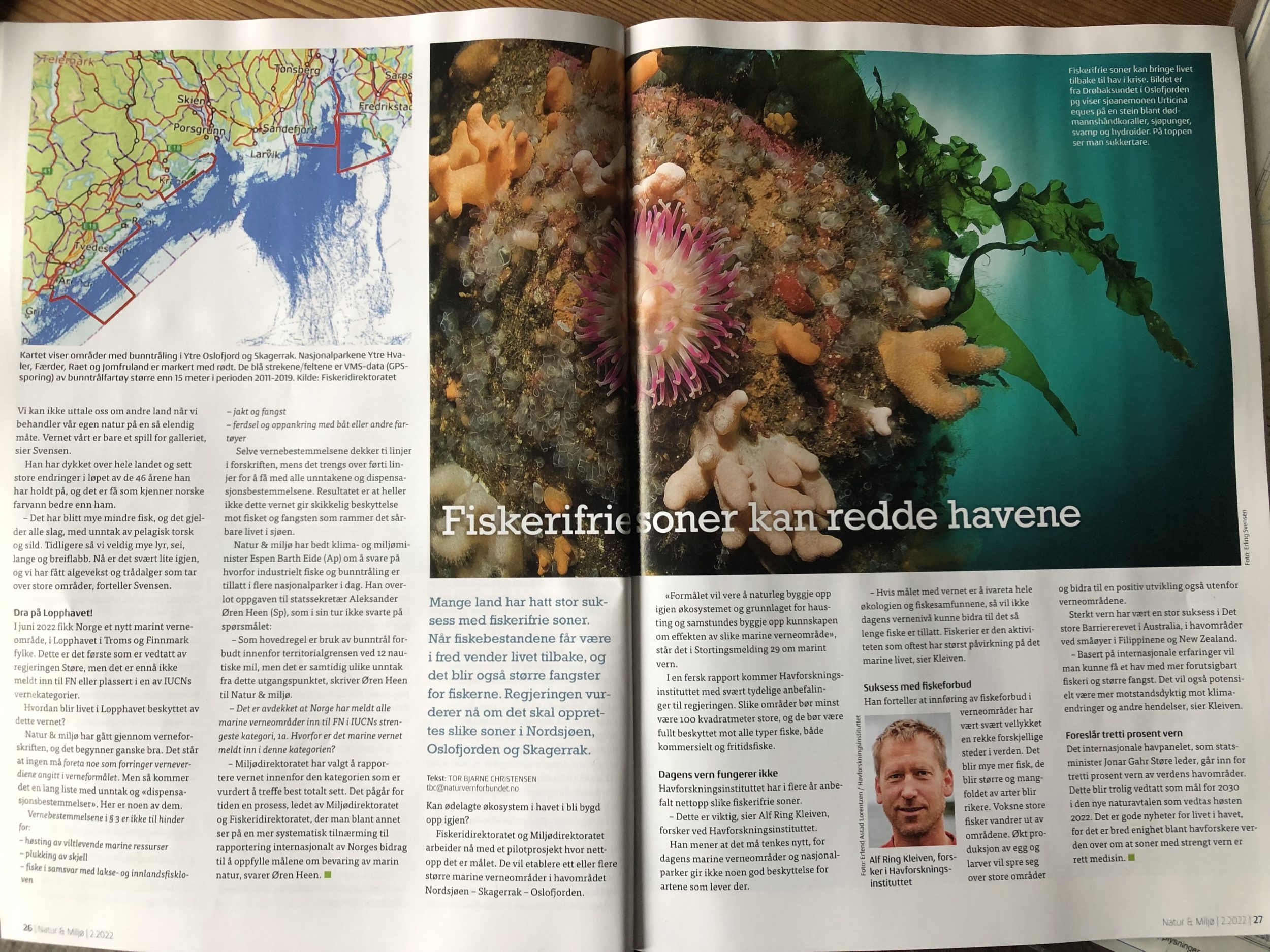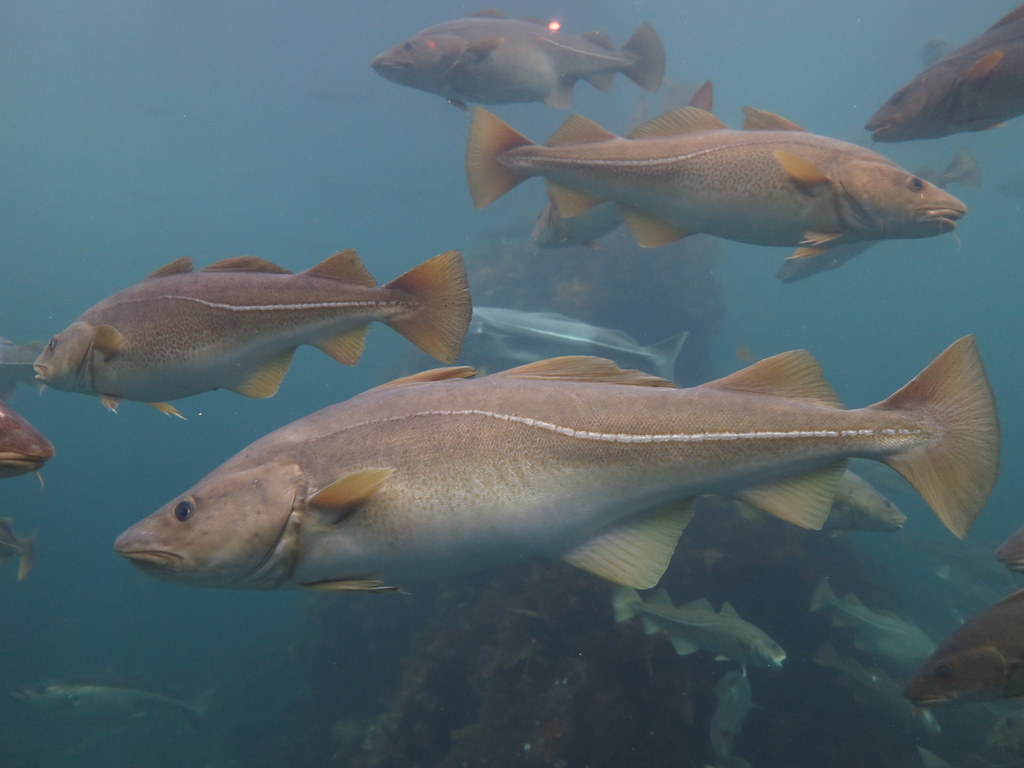
None of Norway’s (marine) national parks meets the international criteria for national parks. Fishery-free zones could save both the fish fauna and the fishery itself. Several countries in the world have done it and can report their success stories. Norway is a developing country concerning the protection of its seas. This is particularly convincingly described in two articles in the latest issue of the Norwegian Nuturvernforbundet’s magazine „Natur & Miljø“. Norway has committed itself to effectively protecting 30% of the oceans by 2030 and is working at the COP15 CBD in December to ensure that all countries follow this 30×30 target. When Norway want to play an important role in the UN and assist other countries in protecting their marine environment, it must do much more than presently „protecting“ 3,6% of its seas, and that is only on paper.

As a first good sign, Norway’s marine research institute now recommends fishery-free zones with a minimum size of 100km2 to save fish stocks. Perhaps the 600km2 Raet National Park on the Skagerrak coast off Arendal, Tvedestrand, and Grimstad could become a shining example if at least half of the marine area is designated as a fishery-free zone. Raet could become Norway’s first real national park. The only thing left to do is to win over broader circles of the local population and the municipalities to this goal, which is also so important for marine protection worldwide. Local tourism companies could also play a pioneering role here. See also LT&C Initiative: https://www.ltandc.org/raet-could-become-norways-first…/



